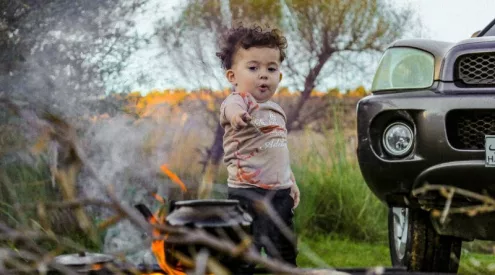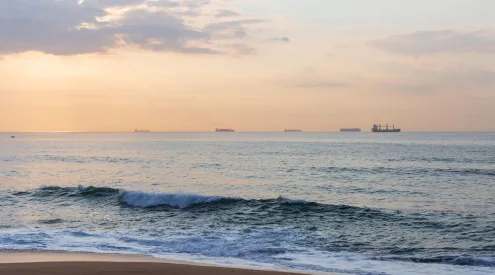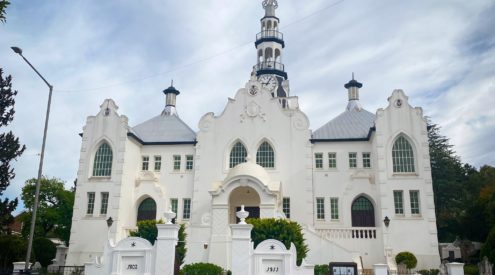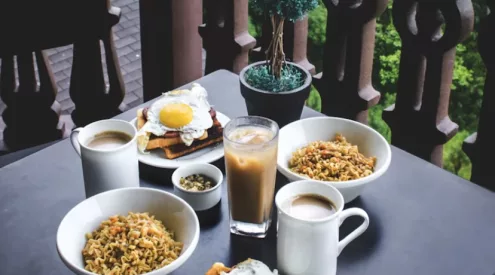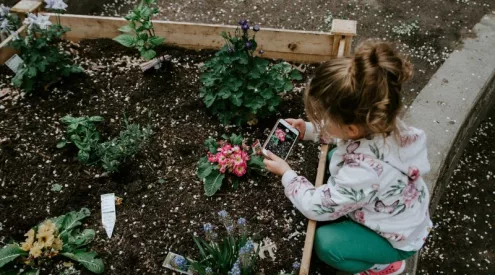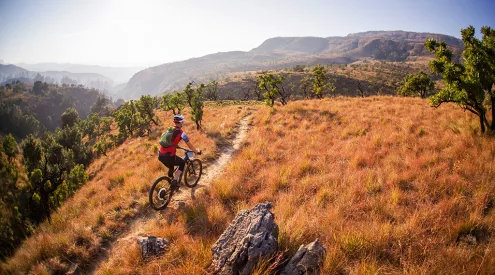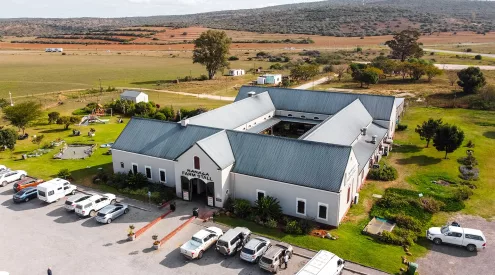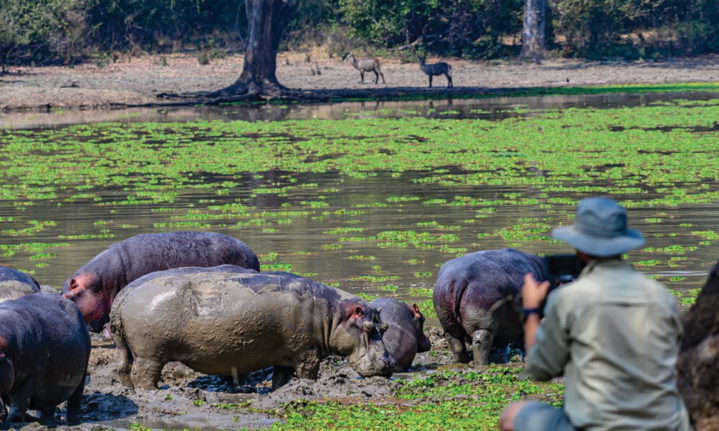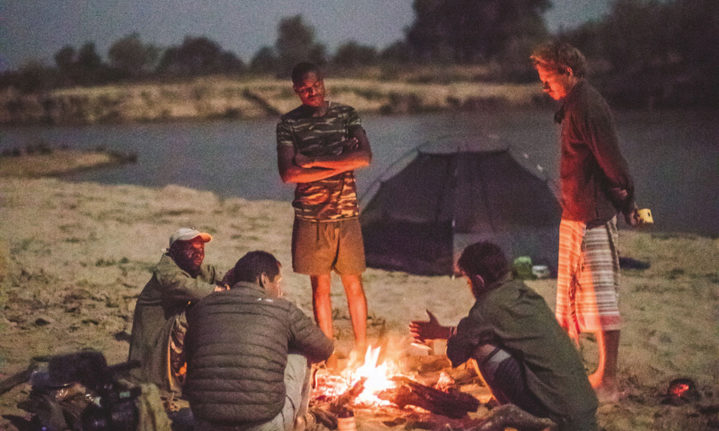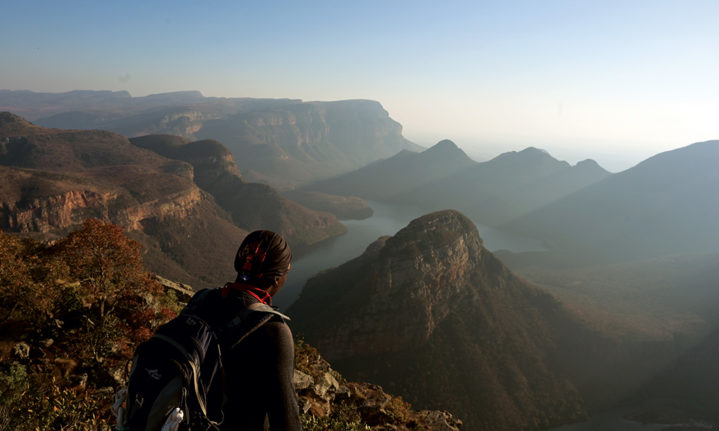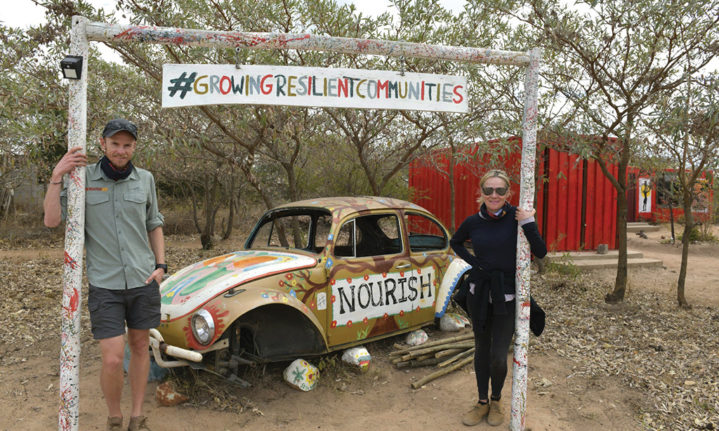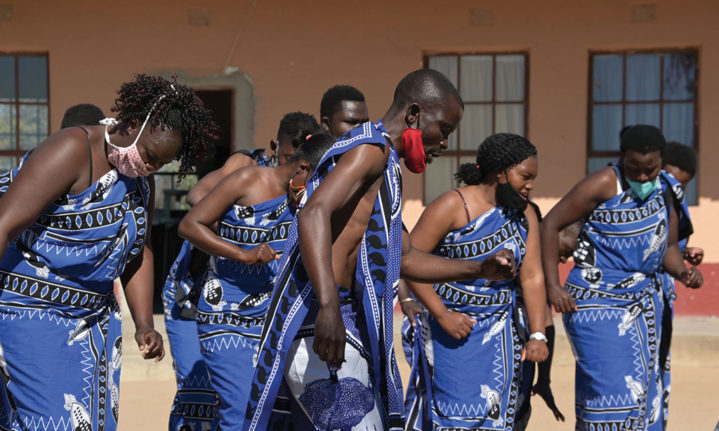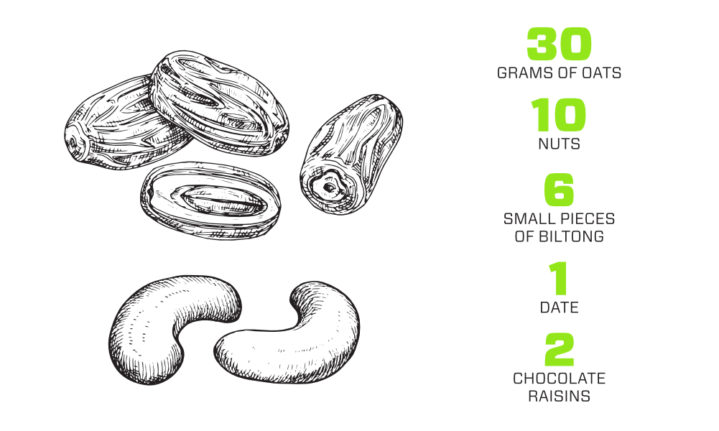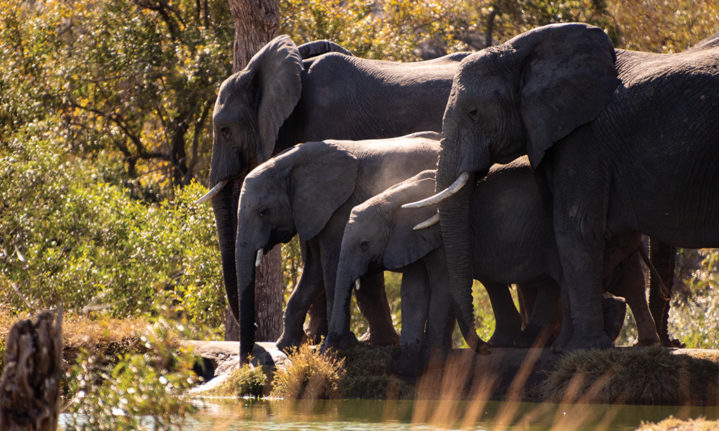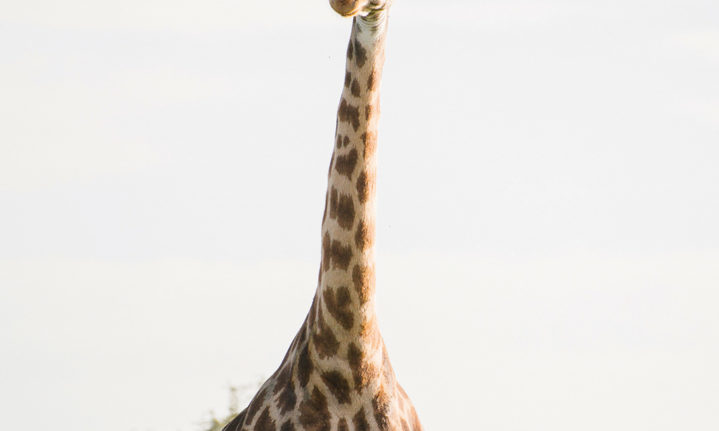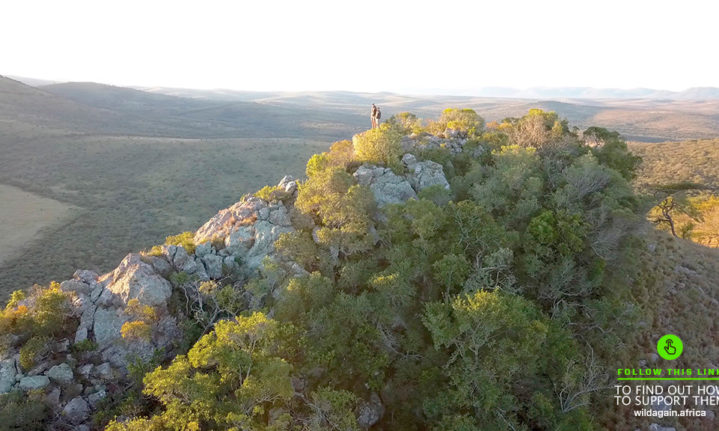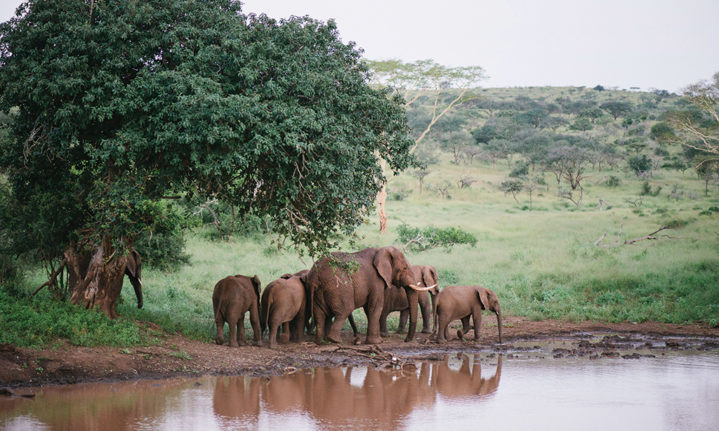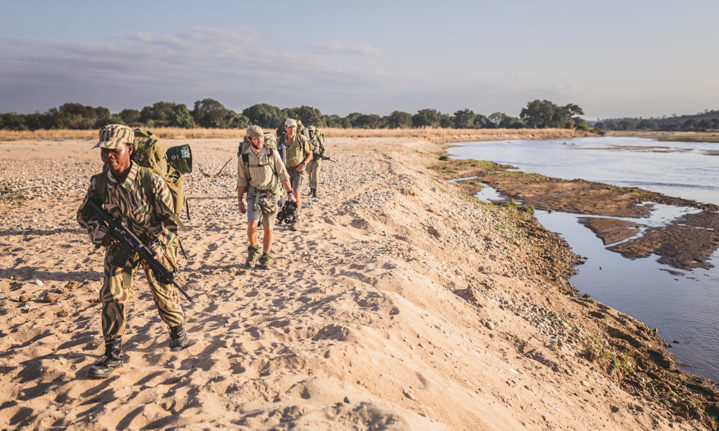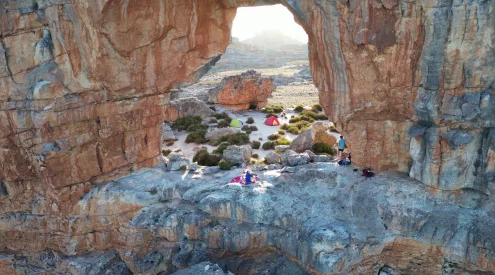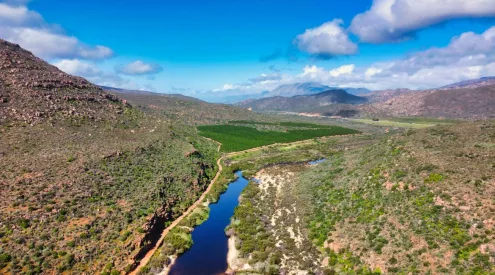With the pandemic wreaking havoc on the tourism industry, three unrelated groups of adventurers hit on the same idea: an epic wilderness walk to help local communities.
Photography: Amy Attenborough, Grant Christie Nick Ridin, Mana Meadows
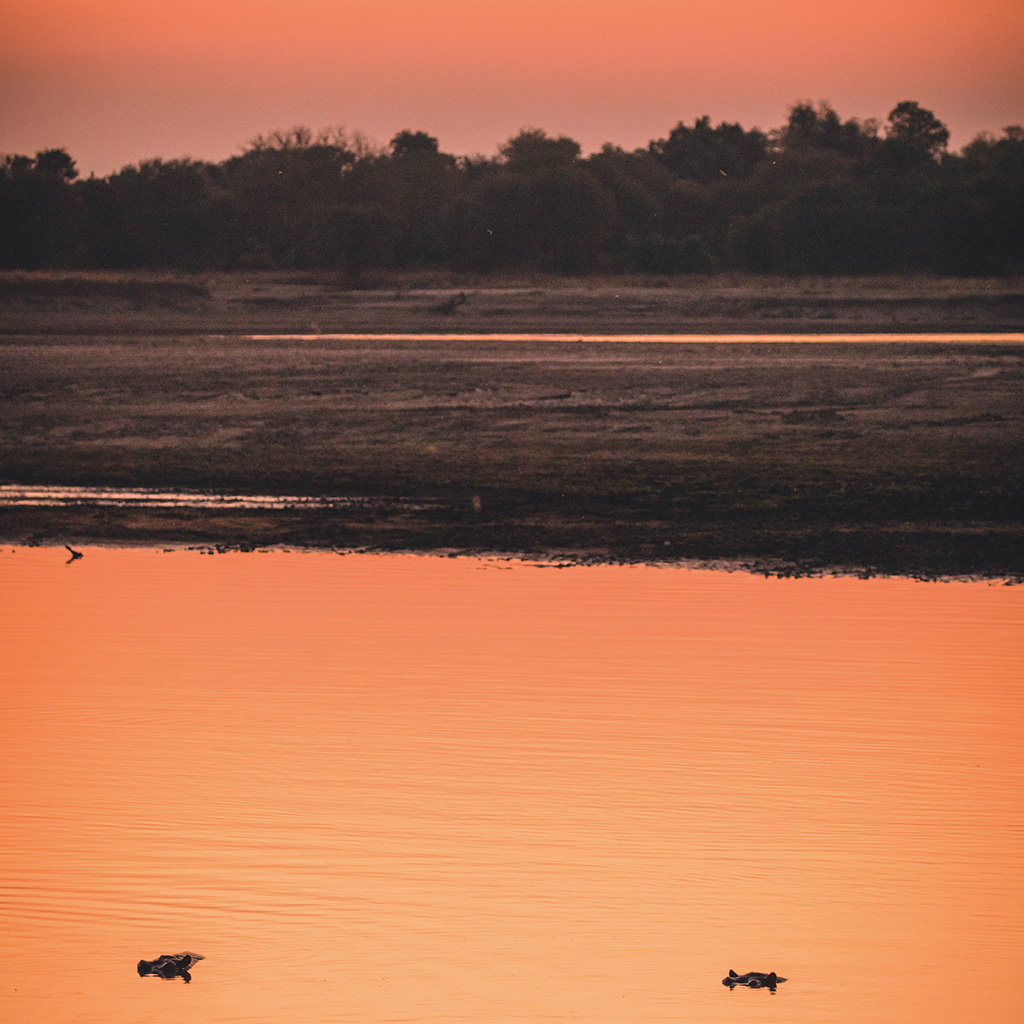
The Luangwa River is a source of life for the valley, but also a fount of danger. Hippos and crocodiles were a constant threat for the Zambian trekkers.
Wild again for 19
Website: Zululandconservationtrust.org
Who: Josh and Amy Attenborough
Where: Manyoni Game Reserve, KZN
Distance 390km over 19 days
Why: Amy and Josh raised money for the Zululand Conservation Trust that funds conservation projects including the re-introduction of pangolins into Zululand where they’ve been extinct for 70 years.
The trust also supports rhino protection, a rhino orphanage, leopard monitoring projects,
wild dog reintroduction and communities
surrounding Manyoni.

Luangwa team was joined by carnivore researchers, canine handlers, wildlife veterinarians and even the warden of South Luangwa National Park.
You’re sent into a Big Five area for 19 days with no tent, no rifle, limited food rations and only your sibling for support. Many wouldn’t return from such a trip. But that’s exactly what Amy and Josh Attenborough did earlier this year. Working in their favour was that they’re both experienced guides – with a cause close to their hearts.
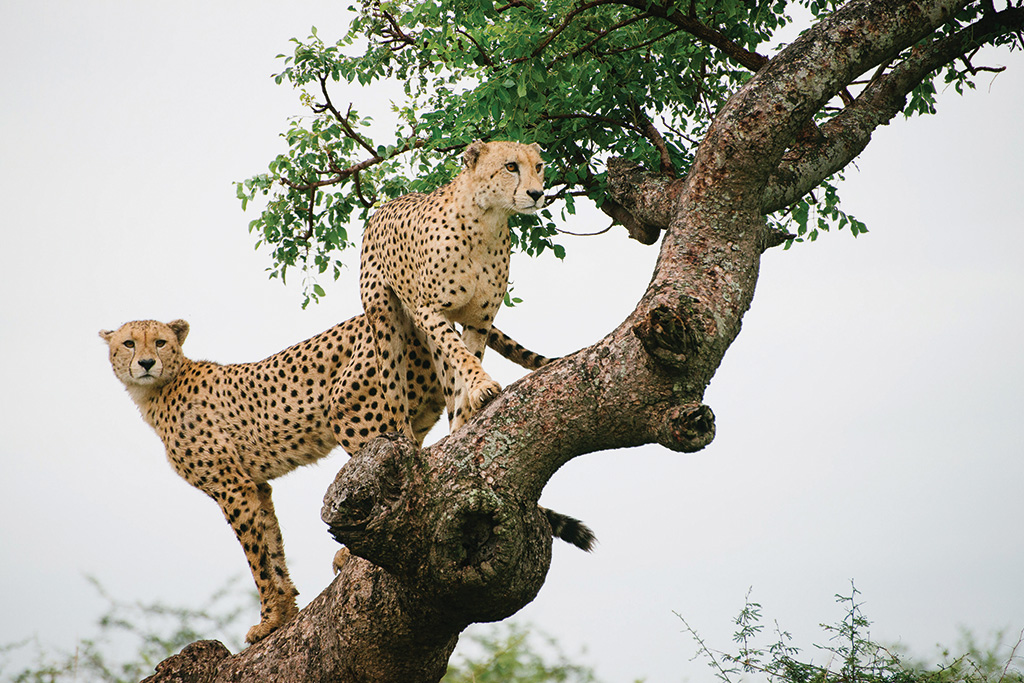
Manyoni has large numbers of predators.
‘Our father has been quite involved in the Zululand Conservation Trust since its inception in 2011 and we knew the trust was struggling,’ Amy said. So Josh suggested they do a week-long walk for wildlife. Their father reckoned that wasn’t hardcore enough and suggested they do 19 days. Their hardcore rating must now be through the roof. After walking all day, each had to do a five-hour watch at night, tending to the fire and keeping an eye out for animals while the other slept.
The lack of food – and the resulting exhaustion – was their biggest challenge.
‘Each day we ate only 30 grams of oats, 10 nuts, about six small pieces of biltong, one date and two chocolate raisins,’ Amy said. ‘Josh lost a total of nine kilograms and I lost four and a half.’ They chose to do this as a representation of an industry that was starving due to Covid.

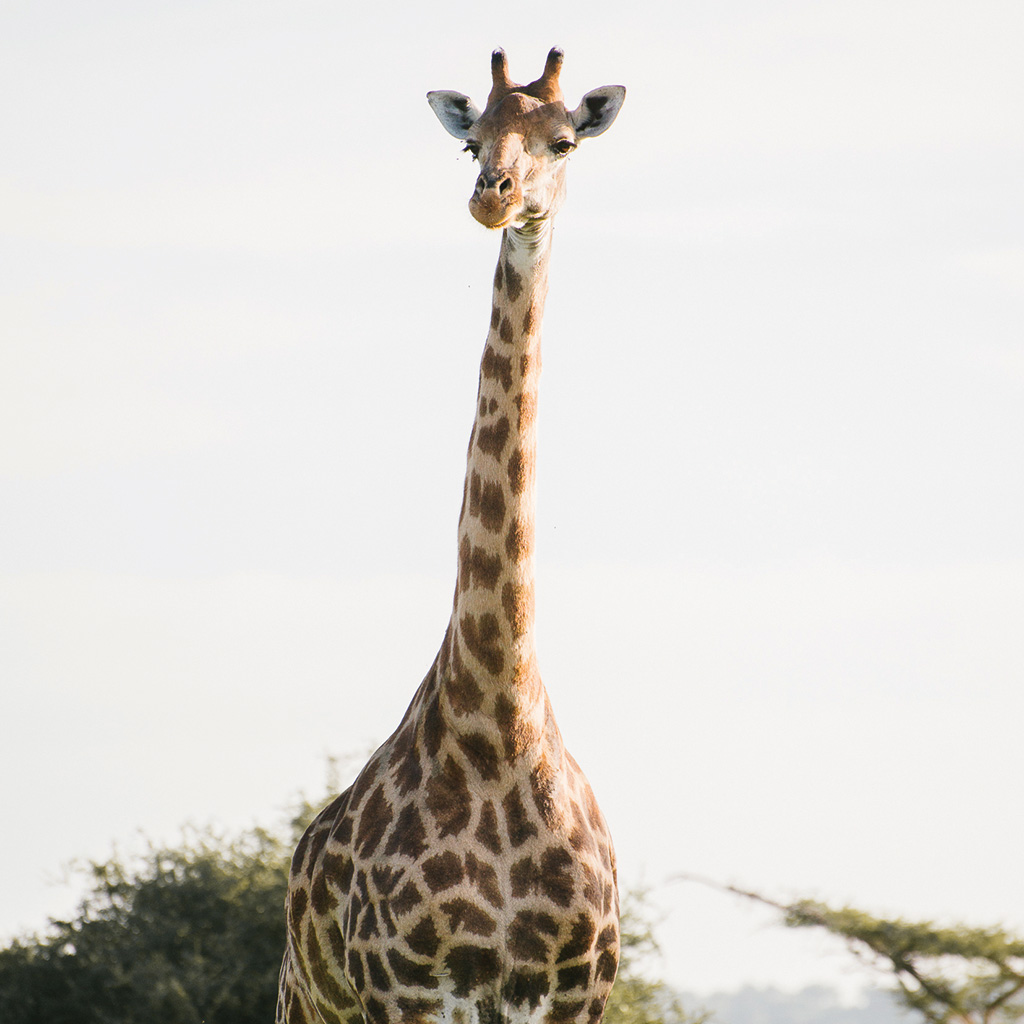
‘We also wanted to stand in solidarity with those on the breadline affected by the pandemic who had no other choice but to go hungry,’ said Amy. ‘So little food, 17-kilogram backpacks, minimal sleep and such long distances taught us to dig deep, and the power of putting just one foot in front of the other.’

Both Josh and Amy have been guides at Londolozi.
A two-day storm in the middle of the walk provided further hardship. After a night of huddling under the ground sheet, seeing no let-up in the storm and with temperatures dropping, they made a break for better shelter. ‘That eight-kilometre walk in the pouring rain, drenched, freezing, filthy and knowing there were no warm showers or comfy beds waiting for us was certainly my hardest moment of the 19 days,’ said Amy.

One of their best moments was watching a herd of elephants from the safety of a knobthorn tree.
Over the course of their walk, Josh and Amy had 34 big-game encounters, including a black rhino strolling into their campsite, encountering wild dogs on the path, a leopard calling around them all night, watching a herd of elephants from the safety of a knobthorn tree and even a lion visit. ‘I woke Josh to inform him that a lion was watching us,’ Amy said. ‘He lifted his head lazily, told me “you’ve got this” and went back to sleep.’
If you’ve spent just a few days in the bush, you know the feeling of peace, calm and rejuvenation. That develops exponentially after 19 days of pure immersion. ‘We heard lions and hyenas calling every night,’ Amy said. ‘We became attuned to wind direction, where to sleep in order to be as warm as possible. Living so basically reminded us just how little you need to be happy and fulfilled.’
Amy’s private guiding safari company Wild Again connects people to the wilderness via three tenets: traditional safaris, wellness safaris and retreats.
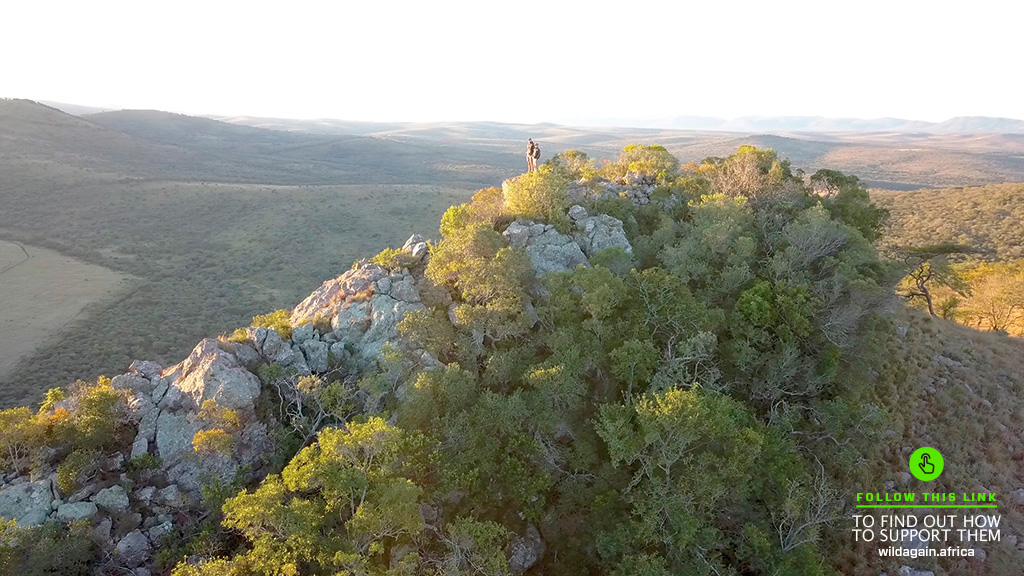
Amy was blown away by Manyoni’s wildife and landscape: ‘We climbed mountains, walked through fever tree forests, wove along dry riverbeds lined with hundreds of sycamore figs and cut a swathe through open grasslands.’
Warrior500
Website: Warrior500.com
Who: Simone Bishop and Grant Christie, with celebrities Bryan Habana, Saray Khumalo, Ricardo Gressel and Sibusiso Vilane
joining for short stints
Where: Kruger and surrounds
Distance: 500km in 21 days
Why: During the shutdown, many lodges in the Kruger area struggled to support their usual local community projects. Funds raised from Warrior
500 are being split between seven lodge community trusts and the Laureus South Africa Covid-19 relief efforts which assists old-age homes, nursery schools, food security
projects, anti-poaching efforts,
wildlife conservation and more.

The hikers found themselves amidst a breeding herd of elephants a few times. ‘We literally had to backtrack and just sit tight.’
At the same time as Covid-19 brought Simone Bishop’s high-end safari business to a standstill, she was also receiving countless emails from lodges pleading for help to support their communities. ‘It made me want to come up with an idea to use this time positively and make a difference,’ Simone said. ‘And then the lightbulb moment happened: why not walk through the Big Five areas of Kruger and Sabi Sands to meet with these impacted communities in person? The objective was to create a narrative and a platform that we could use to raise funds.’
She phoned Grant Christie, a hiking guide and adventurer who’s no stranger to long walks (in 2014, he walked the length of South Africa’s coastline by himself) and the two of them set the plan in motion.
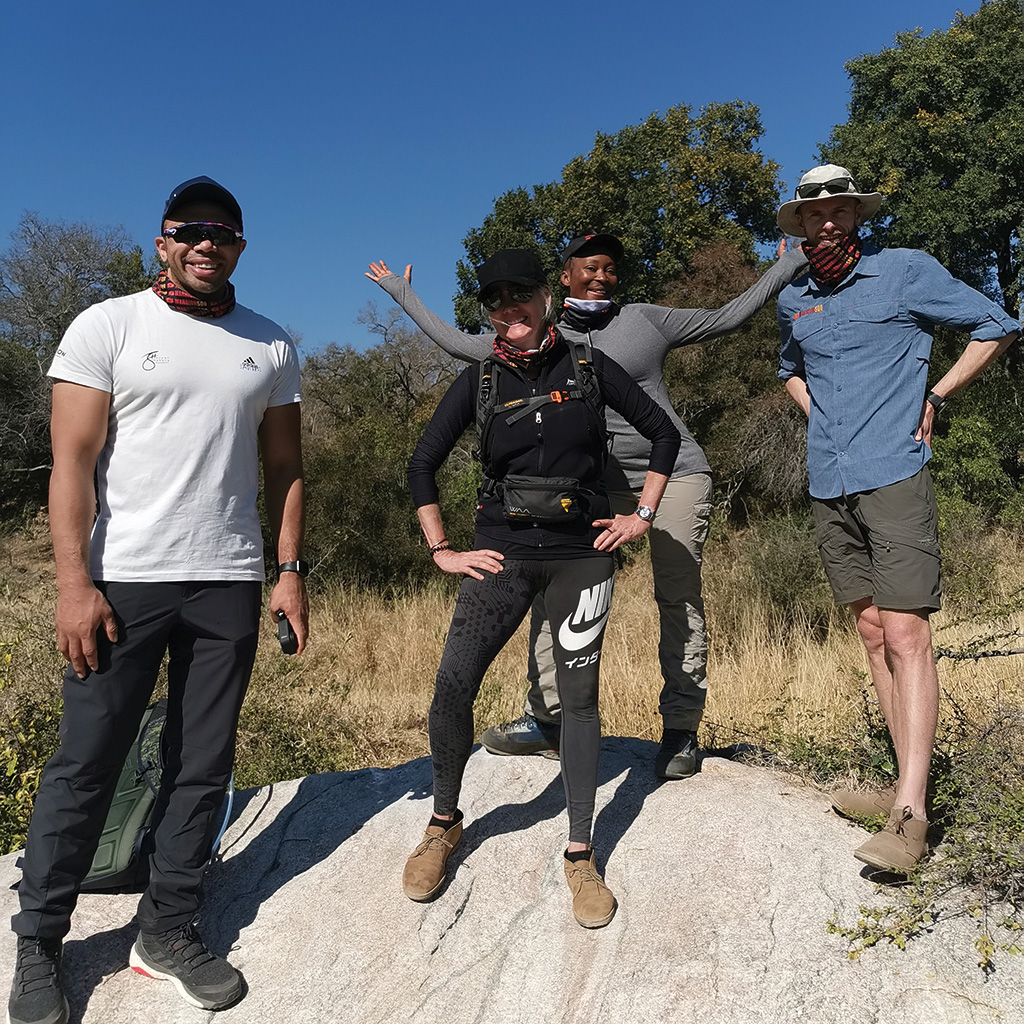
Simone and Grant with ambas-sadors: former Springbok Bryan Habana and mountaineer Saray Khumalo.
They started in the Kruger near Sabi Sand on a big loop that took them through the towns of Hazyview, Sabie and Graskop before entering the Blyde River Canyon and returning to the Kruger through the Kapama, Thornybush and Timbavati concessions.
Incredible Encounters
They encountered a thrilling buffalo stampede that resulted in both guides loading their rifles, two leopards in one day and coming face-to-face with a large male lion no more than 20 metres away.
‘A surreal moment was standing at the Blyde River Dam, in the heart of the canyon, surrounded by immense cliffs and being the only people there,’ Grant said.

The adventurers at Nourish Eco Village in the Acornhoek Community
‘I was surprised at how safe I felt when we encountered wildlife at close proximity,’ Simone said. ‘This was thanks to the highly professional guides who accompanied us, and recognised that there’s an invisible barrier that should never be crossed.’
While the walk and what they saw was incredibly special, what stood out most for both was the experiences they had with the people. ‘Best of all was walking through the communities,’ Grant said, ‘being greeted with song and laughter by curious children and engaging with community leaders.’
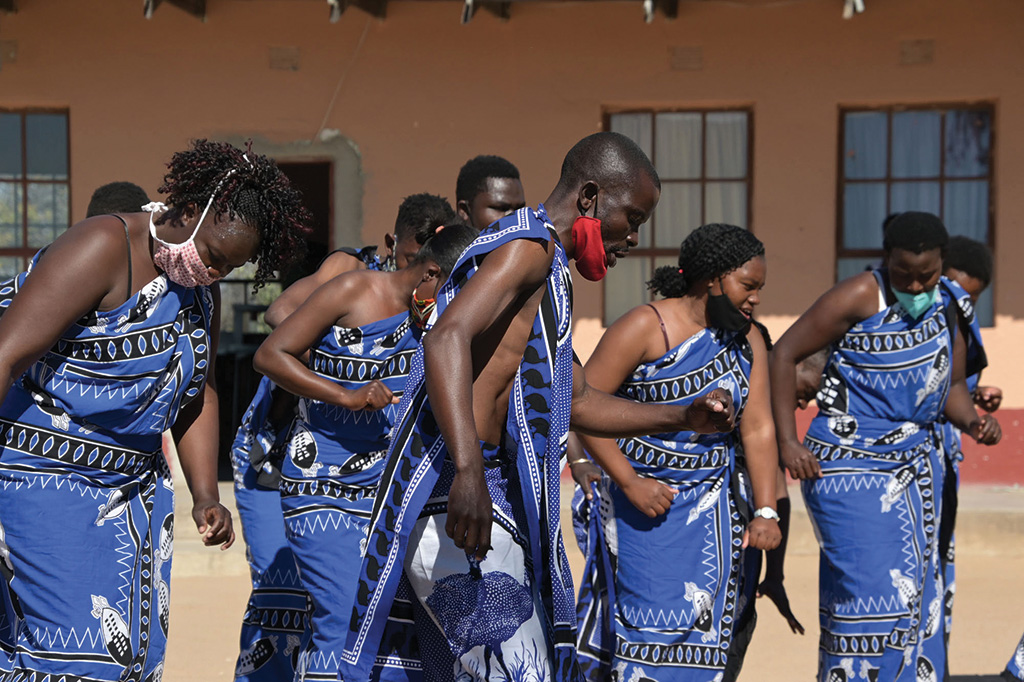
The Youth in Action community choir performing at the Hlayisekani Home for the Aged, Kildare.
Many nights were spent around the fire discussing the importance of tourism for the lives of the communities that live near lodges. ‘More often than not just one tourism job is the sole income for an entire family, sometimes even extended family,’ Simone said. ‘It’s extremely important to convey to our local and international visitors what a vital part their holiday plays in supporting these rural communities.’
The experience left such a mark on the walkers that plans are now a foot to make the Warrior500 an annual event.

Sibusiso Vilane surveys the magnificent Blyde River Canyon.
Walk Luangwa
Website: justgiving.com/crowdfunding/walkluangwa2020
Who: Nick Riddin, Mana Meadows and Matthew Blair were joined by a cross section
of individuals involved in community work, conservation or tourism along the way – 38 people in all.
Where: Luangwa Valley, Zambia
Distance: 350km over 17 days
Why: Much of the Luangwa Valley relies on tourism. Funds from the walk, raised through the Just Giving campaign, will be distributed among six community and conservation partner organisations within the Luangwa ecosystem.
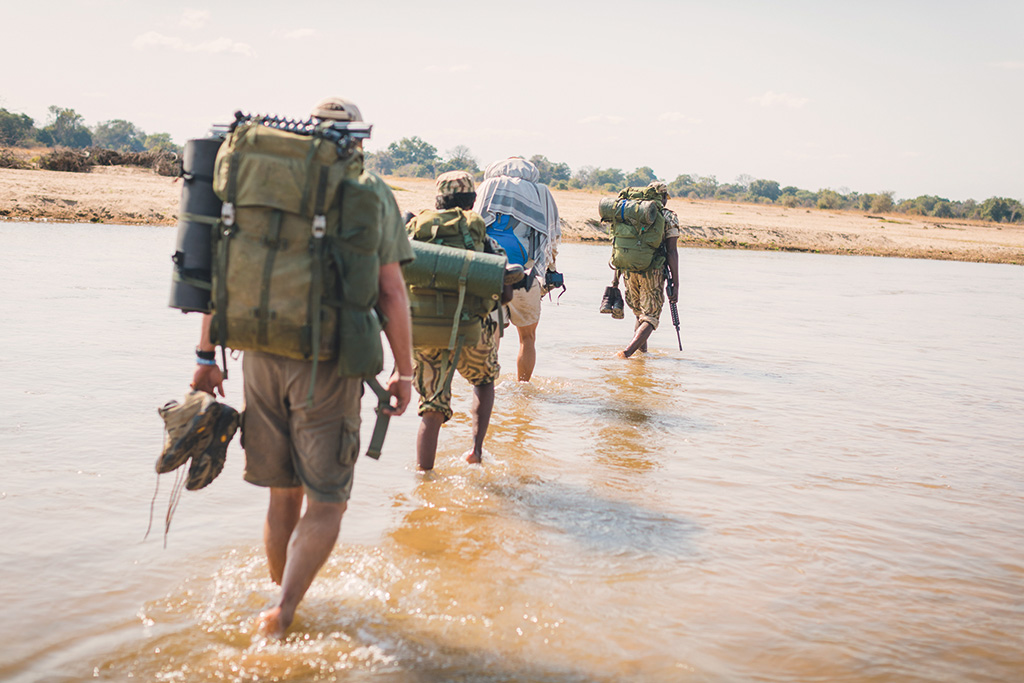
River crossings were common and took much of the blame for the blisters
When settling into a new life in a foreign land, it often helps to create your own story connecting you to the place. That was exactly Nick Riddin’s thinking when he started planning a trek on foot in the Luangwa Valley. ‘Initially it was going to be 150 kilometres,’ said Nick, who grew up in Grahamstown, and moved to the valley in 2018. ‘But when local tourism shut down, we hatched a plan to include a wider area of the Luangwa Valley to raise funds for conservation organisations and communities which have been struggling.’
The walk started in North Luangwa National Park, meandered its way along the Mwaleshi and Luangwa rivers and ended at the southernmost tourism camp in South Luangwa National Park. Walkers stayed in a combination of wild camps and lodges.
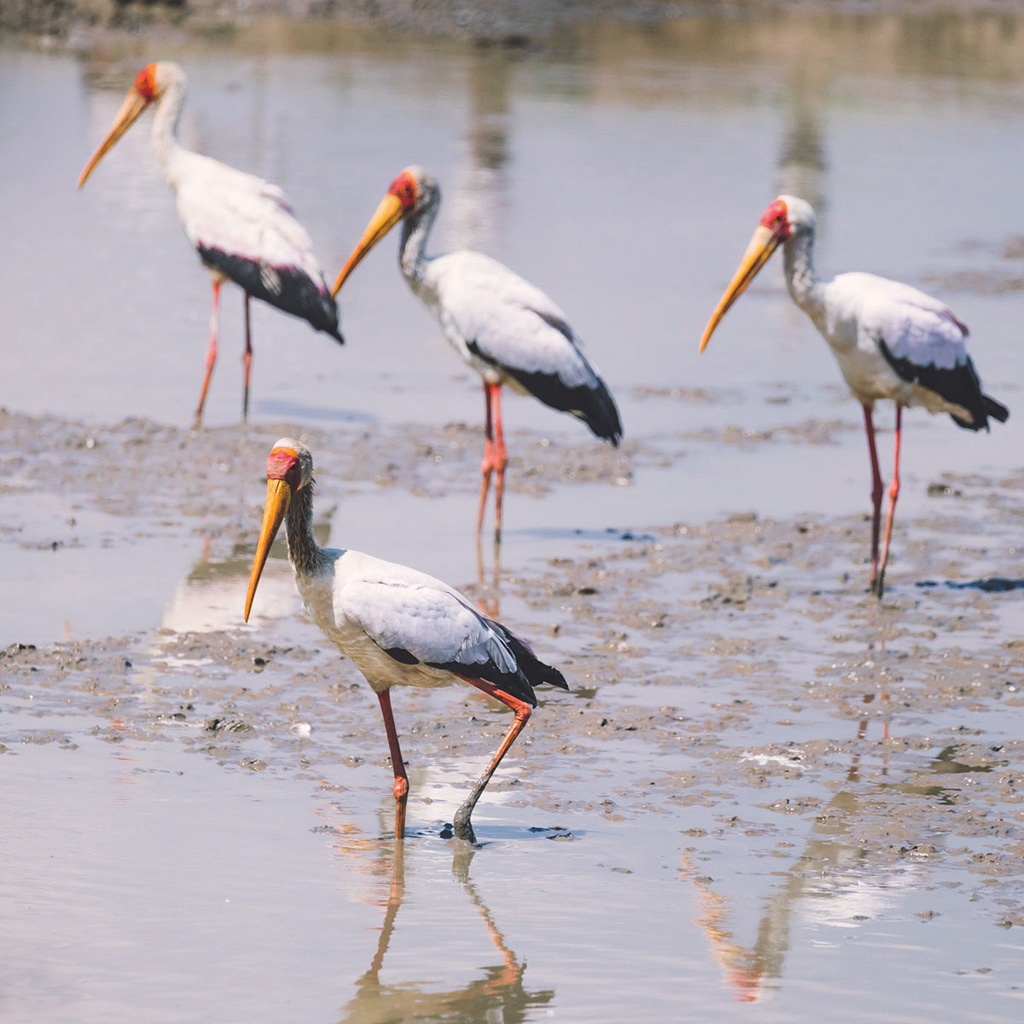
The Luangwa is one of the longest undammed rivers in Africa and home to a rich bounty of life.
‘The Luangwa Valley is regarded as one of the wildest places in Africa, with one of its longest undammed rivers, no fences restricting animal movement and no major development,’ Nick said. This was one of the reasons it became the birthplace of walking safaris in Africa, which Robin Pope brought to prominence in the 1990s.
Nick was joined by the husband-and-wife duo of Mana Meadows and Matt Blair who, together, run Conservation Storytelling, a platform which shares the stories and ideas of diverse voices from the fields of conservation. They documented the walk while also working on a longer-term film project, which will explore the relationship between people of the Luangwa Valley and the valley itself.

The group had long days, so the quieter moments were particularly cherished – fireside chats about the future of Luangwa,
‘The daily conversations with such a wide cross-section of people who call this valley home were incredibly inspiring and motivating,’ Mana said. ‘From the fishermen who risk their lives daily among hippos and crocodiles, to the dedicated rangers and scouts, to the long-standing operators who have seen many shifts in the valley over the years.’
Great Companions
Custodians of Luangwa Valley who also joined the walk included carnivore researchers, canine handlers from anti-poaching units, wildlife veterinarians, camp owners, Robin Pope and other valley legends, and even the warden of South Luangwa National Park. For the final five kilometres, around 100 people from Mfuwe village joined, including a provincial minister.
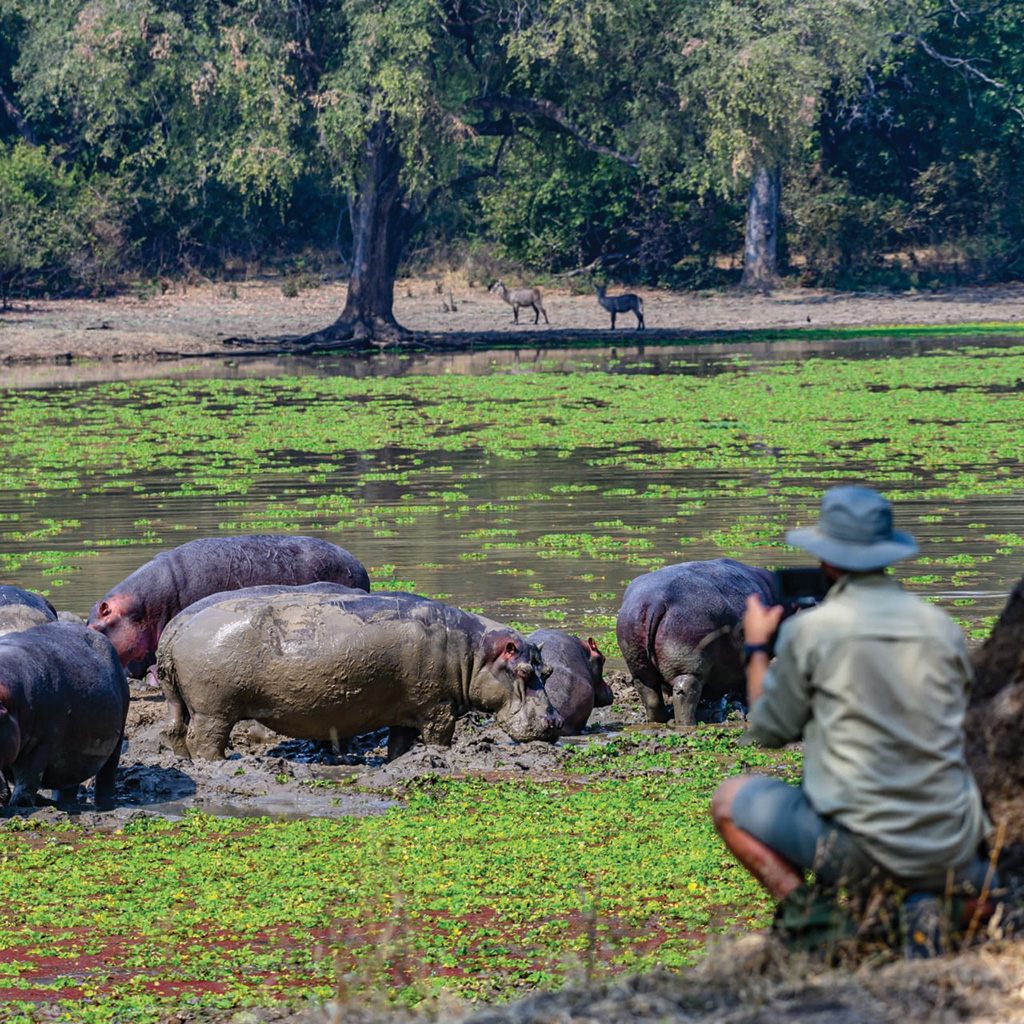
Observing hippos from a shaded bank.
Nick reckons their first day was the toughest. ‘We were walking really fast through thick bush. We had another 340-odd kilometres to go, our shoulders were aching and our feet had started to blister after a river crossing.’ Their experience improved in the days to come and the group enjoyed a good mix of sightings, including black rhino, seven different leopards, antelope, elephant, giraffe and one or two close encounters with lazy hippos.
Wildest Nights
‘On the first night, our tents were surrounded by three big male lions calling for over five hours,’ Nick said. ‘It was the most incredible night, with not one guest in the national park at the time. Two nights later, from our tents, we watched a lion hunting.’

Or stopping mid step to watch the wildlife watch you.
‘It was really special when the animals didn’t know we were there,’ Mana said, ‘or were relaxed with us – like our lunch break at a lagoon bursting with yellow-billed storks, fishing and squabbling as fish eagles dive-bombed them. Or quietly watching elephants come down to drink, sitting with a herd of buffalo as they crept closer to us and seeing a big leopard walk across a river bed, oblivious of us. We were often in areas where we saw no other people or roads for days at a time and that was exhilarating.’
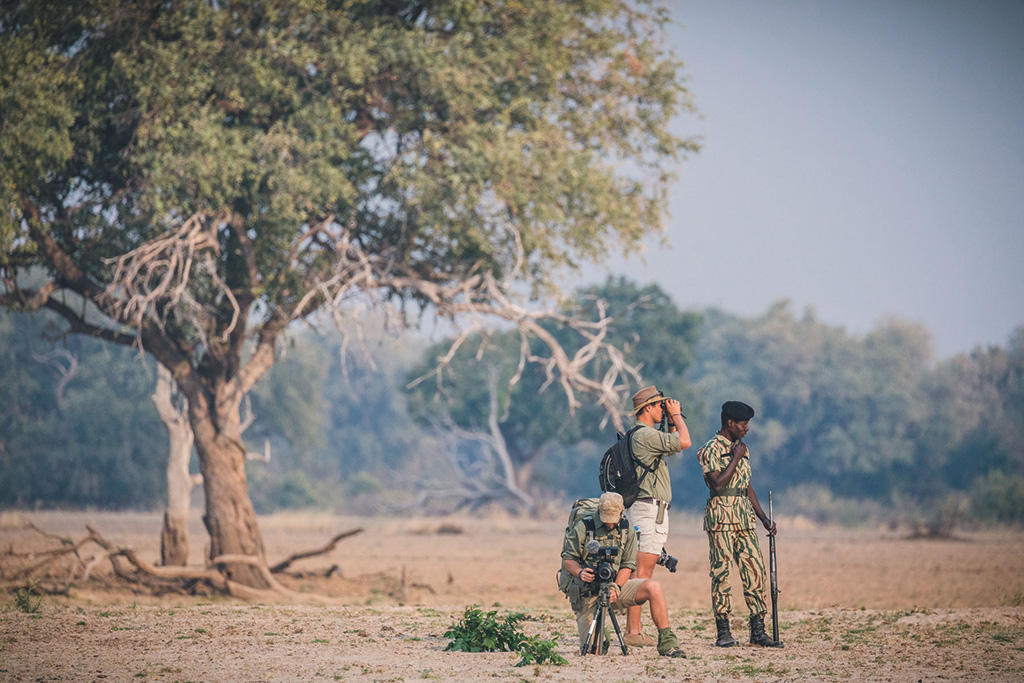
Go to
conservationstorytelling.com to see Mana and Matt’s work from across Africa, including a podcast series that focuses on the people behind the scenes of protecting Africa’s
wild places.

